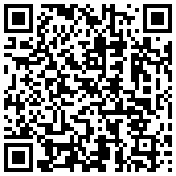The QR code — that funny-looking square bar code popping up on billboards, magazines and business cards — is now on the pages of medical and health care journals.
 In October, the Journal of the American Medical Association (JAMA) began incorporating the two-dimensional scannable code on at least one study every issue. When scanned with a smart phone camera, the “quick response” code directs the reader to a video of the study’s author discussing his or her research in detail.
In October, the Journal of the American Medical Association (JAMA) began incorporating the two-dimensional scannable code on at least one study every issue. When scanned with a smart phone camera, the “quick response” code directs the reader to a video of the study’s author discussing his or her research in detail.
Dr. Howard Bauchner, who became JAMA’s new editor-in-chief in July, says he thought about implementing QR codes after seeing them in popular magazines. “I was reading the New Yorker one week, and on the first ten pages there were five QR codes. So I took out my smart phone and voilà, they had the first few chapters of someone’s new book,” he says. The JAMA tech staff told Bauchner they could create QR codes for their website within the week.
QR Codes are able to hold up to 14 different types of media including websites, videos and music and can encode more data than a traditional bar code. They are as simple as a Google search to make, and they’ve been making an appearance in the medical and health care field — slowly. According to a Medical Marketing survey, 65 percent of physicians don’t know about the mobile information resource, though experts say their marketing potential for medical workers and health care facilities is immeasurable — especially in a smartphone-friendly world.
JAMA, which has the highest circulation among medical journals in the U.S. at 300,000, will also connect their QR codes to podcast content starting in January. In addition, Bauchner says JAMA along with the other Archive journals will launch a Web app tailored for tablets in that same month. “So in addition to QR codes we are going to have more modern technology of tablet-ready materials.” The editor-in-chief says that publishing for the iPad and other tablets will be a huge leap for medical journals, because it will merge print and Web readers closer together. The journal is making other changes including new cover art, which Bauchner says can drive more readers to the site and eventually to the QR code. “As one reader told me, I guess this is not your father’s JAMA anymore.”






